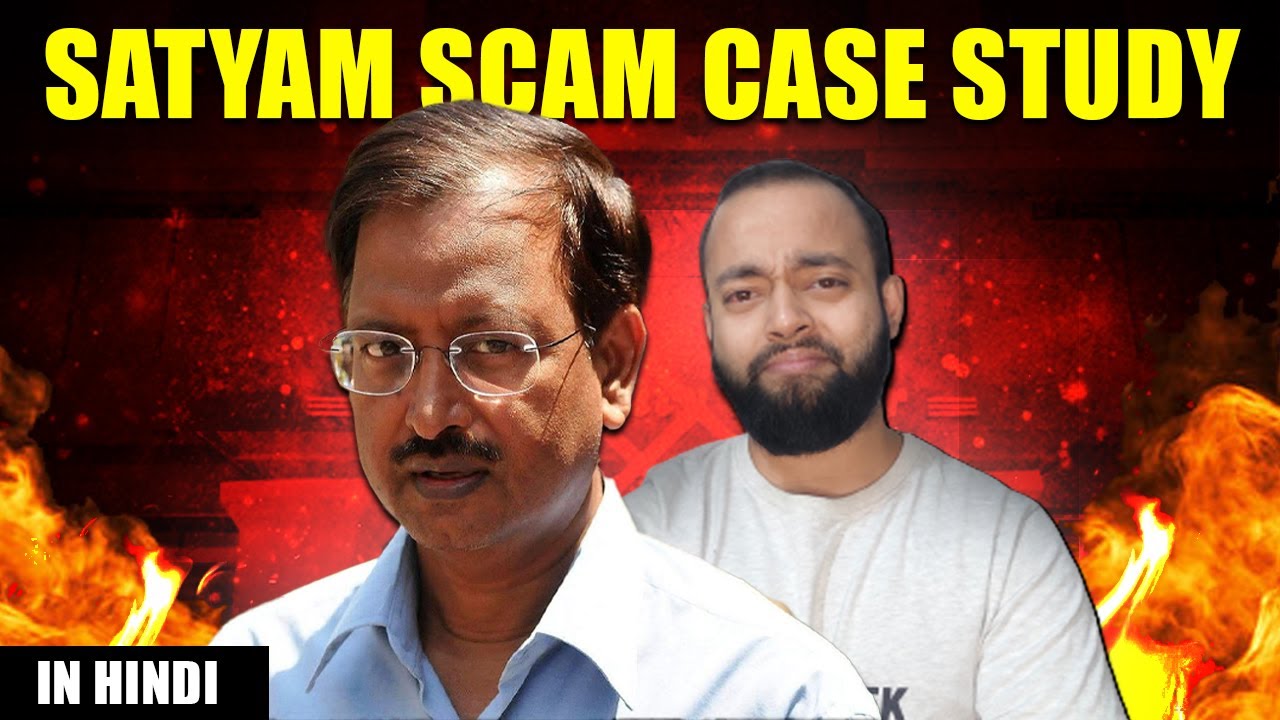EP 02: Satyam Scam Full Story Explained | Case Study in Hindi
Summary
TLDRThe Satyam Scam, orchestrated by B Ramalinga Raju, involved massive financial statement manipulation at India's once 4th largest IT company. Raju inflated profits and created fake invoices to boost Satyam's share price, using the proceeds to fund his real estate ventures. As the骗局 unraveled in 2008 amidst a real estate downturn and failed acquisition plans, Raju confessed to a staggering ₹7000 crores discrepancy. The scandal led to arrests, Satyam's acquisition by Tech Mahindra, and regulatory actions against Raju, his family, and auditors PWC, highlighting the importance of corporate governance and investor vigilance.
Takeaways
- 😀 Satyam Computer was founded by B Ramalinga Raju and his brother-in-law in 1987 and became one of India's fastest-growing IT companies.
- 🏢 Satyam Computer was listed on the BSE in 1991-92 and on the New York Stock Exchange in 2001.
- 💼 B Ramalinga Raju's initial ventures included a cotton business, and later, he shifted focus to the booming real estate market.
- 📈 Raju manipulated Satyam's financial statements to inflate profits and show rapid company growth, which in turn increased the share price.
- 🏦 To fund his real estate ventures, Raju sold Satyam shares, took loans against pledged shares, and opened numerous companies to buy properties.
- 🔍 Raju had inside information about Hyderabad's metro route and used it to buy land near the proposed route, anticipating price increases.
- 📉 The real estate market slowdown in 2008 led to Raju's plan to sell properties and fix the financial discrepancies failing.
- 🚫 A plan to acquire Maytas Infra and Maytas Properties was proposed by Raju to fill the financial gap but was met with investor disapproval and eventually canceled.
- 📊 Raju confessed to years of financial statement manipulation, revealing a difference of ₹7000 crores between actual and fake figures.
- 🏛️ The Satyam scandal led to the arrest of Raju and his brother, the appointment of new board members, and the company's eventual acquisition by Tech Mahindra.
Q & A
What was the background of B Ramalinga Raju before starting Satyam Computer?
-Before starting Satyam Computer, B Ramalinga Raju had a cotton business.
In which year did Satyam Computer get listed on the New York Stock Exchange?
-Satyam Computer got listed on the New York Stock Exchange in 2001.
What was the primary reason for B Ramalinga Raju's shift in focus from Satyam Computer to real estate?
-The primary reason was a boom in the real estate market, with rapidly increasing rates in Hyderabad.
How did B Ramalinga Raju manipulate the financial statements of Satyam Computer?
-Raju would inflate profits, for example, showing a profit of ₹60 Crores as ₹600 Crores in the financial statements to give the impression of rapid growth.
What was the role of the companies Maytas Infra and Maytas Properties in the Satyam Scam?
-Maytas Infra and Maytas Properties, started by Raju in 1988, were used to buy properties in the name of these companies, his family members, and himself.
How many fake sales invoices did Raju create to show fake sales in Satyam Computers?
-Raju created 7,500 fake sales invoices to show fake sales.
What was the significance of the proposed metro route in Hyderabad for Raju's real estate investments?
-Metro Man Sreedharan claimed Raju had inside information about Hyderabad's proposed metro route, allowing him to buy land near the route, anticipating increased land prices once the metro was operational.
What was the plan to fill the gap between the fake and actual financial figures of Satyam Computer?
-Raju planned for Satyam Computer to buy a 51% stake in Maytas Infra and Maytas Properties, which were owned by the Raju family, to show that the companies had been bought using the inflated figures.
What was the reaction of Satyam's investors and the market to the proposed acquisition of Maytas Infra and Maytas Properties?
-Satyam's investors, especially institutional investors, did not like the decision, leading to a rapid fall in Satyam's stock and a 55% drop in its NYSE stock value.
What were the consequences for PriceWaterhouseCoopers (PWC), Satyam's auditor, after the scam was exposed?
-SEBI banned PWC for two years, and the US stock market regulator, SEC, fined PWC $6 million for not properly checking the financial statements and invoices.
What was the final outcome for B Ramalinga Raju and Satyam Computer after the scam was exposed?
-Raju confessed to the manipulation of financial statements, was sentenced to 7 years in jail, and was fined ₹5.5 Crores. Satyam was eventually bought by Tech Mahindra, which changed its name to Mahindra Satyam and later merged with Tech Mahindra.
Outlines

Esta sección está disponible solo para usuarios con suscripción. Por favor, mejora tu plan para acceder a esta parte.
Mejorar ahoraMindmap

Esta sección está disponible solo para usuarios con suscripción. Por favor, mejora tu plan para acceder a esta parte.
Mejorar ahoraKeywords

Esta sección está disponible solo para usuarios con suscripción. Por favor, mejora tu plan para acceder a esta parte.
Mejorar ahoraHighlights

Esta sección está disponible solo para usuarios con suscripción. Por favor, mejora tu plan para acceder a esta parte.
Mejorar ahoraTranscripts

Esta sección está disponible solo para usuarios con suscripción. Por favor, mejora tu plan para acceder a esta parte.
Mejorar ahoraVer Más Videos Relacionados

Satyam Scandal Explained | Satyam Scam in Hindi

Satyam Scam Full Story Explained | Case Study in English | Ramalinga Raju | Sharemarketstudies

DHFL The India’s Biggest Financial Scam | DHFL Scam Explained In Hindi | Harsh Goela

Ketan Parekh SCAM💀: Things Hidden from You! | Ketan Parekh Scam Explained | Harsh Goela

Scam 2003 🔥 The Telgi Story | Abdul Karim Telgi Stamp Paper Scam | Sony LIV 2.0 | Live Hindi

Warum du keine Chiquita-Bananen kaufen solltest
5.0 / 5 (0 votes)
